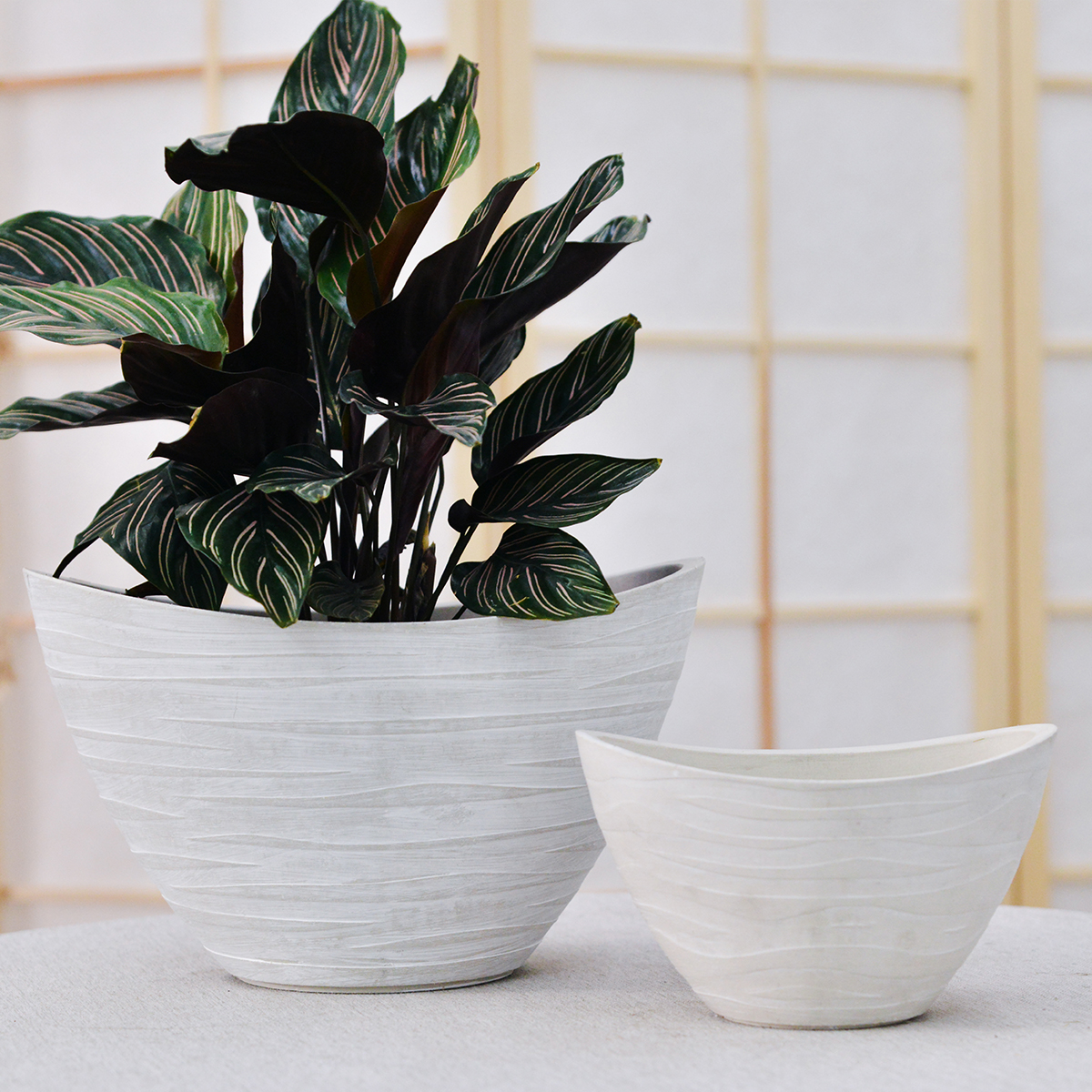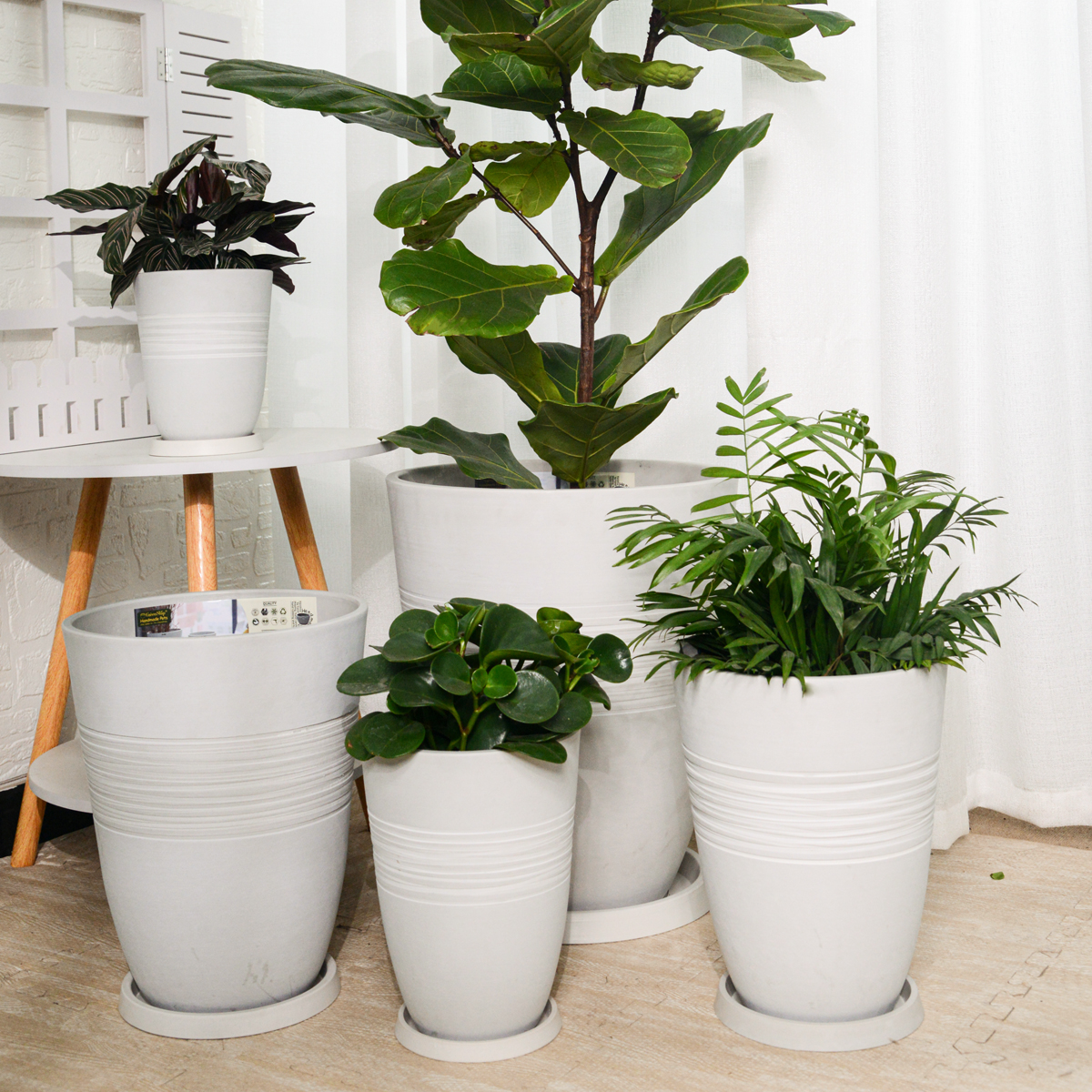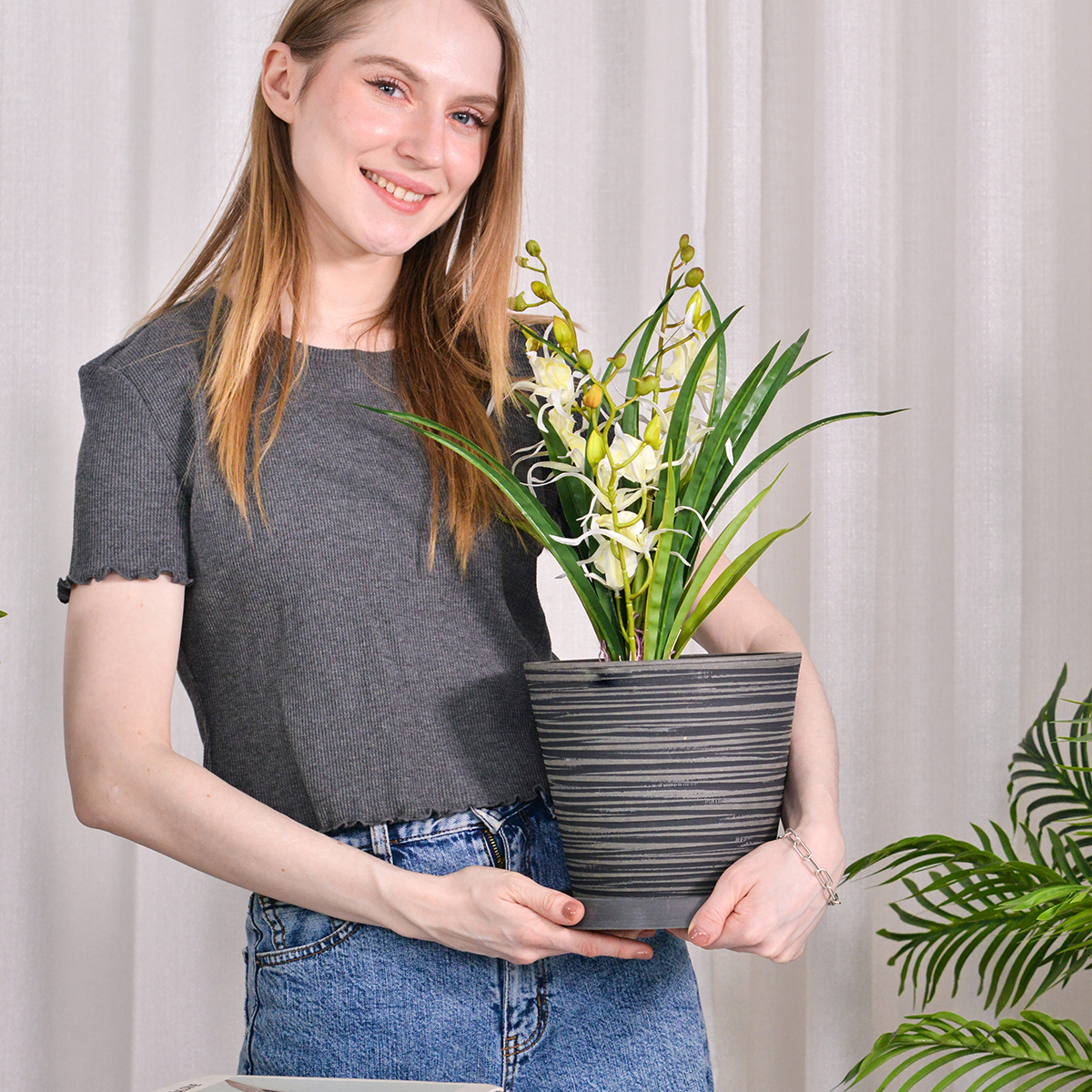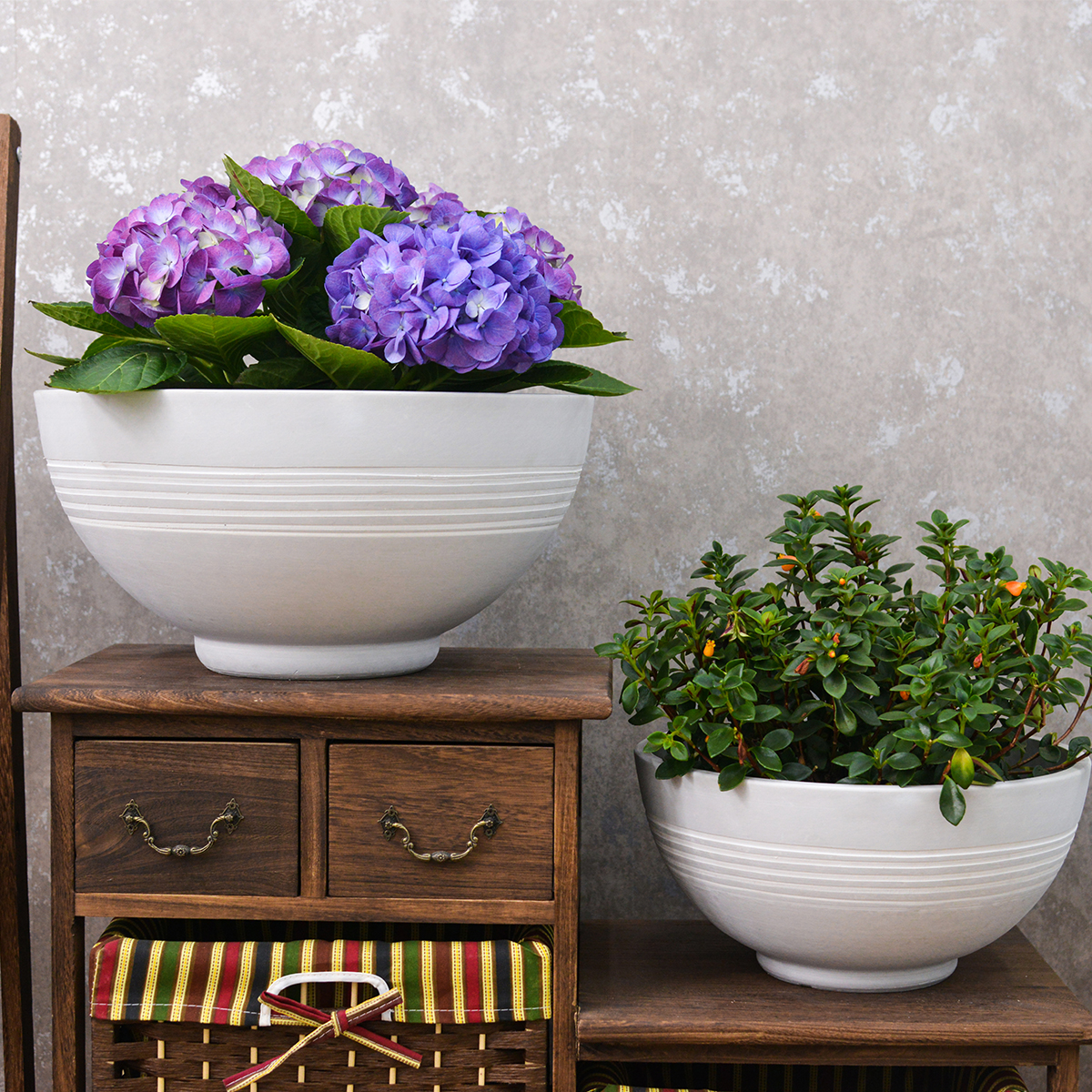Canna Lilies in Pots: Container Gardening Guide for Stunning Blooms
Canna Lilies (Canna genus) are bold, tropical plants prized for their vibrant flowers and lush, banana-like foliage. While often grown in garden beds, Canna Lilies thrive beautifully in containers, making them perfect for adding dramatic flair to patios, decks, and balconies. Container gardening with Canna Lilies offers flexibility and allows you to move these tender plants indoors for winter protection in colder climates.
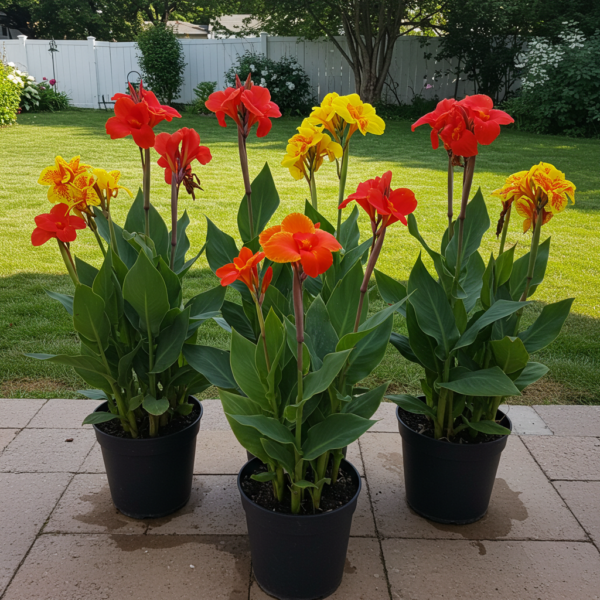
Canna Lilies
Key Features of Canna Lilies:
- Flowers: Canna Lilies produce striking, orchid-like flowers in a wide array of warm colors, including red, orange, yellow, pink, and bi-colors. Some varieties also feature speckled or striped petals. Flowers are borne on tall stalks above the foliage, creating a dramatic display.
- Foliage: The large, paddle-shaped leaves of Canna Lilies are just as ornamental as the flowers. Foliage comes in shades of green, bronze, burgundy, and even variegated stripes, adding texture and visual interest to the garden.
- Types: Canna Lilies are hybrids, and cultivars are typically grouped by size and foliage color. Popular types for container gardening include:
- Dwarf Cannas: Varieties like ‘ dwarf ‘Toucan’ series, ‘Pretoria’ (Bengal Tiger), and ‘Lucifer’ are bred for compact growth (2-4 feet tall) making them ideal for pots.
- Medium Cannas: Many standard canna varieties (4-6 feet tall) can also be grown in larger containers. Examples include ‘Wyoming’, ‘City of Portland’, and ‘Cannova’ series.
- Foliage Cannas: Varieties prized for their striking foliage, such as ‘Tropicanna’, ‘Australia’, and ‘Striata’, are excellent container choices to showcase leaf color and texture.
- Size: Canna Lily size varies greatly by variety, from dwarf types reaching 2 feet to taller varieties reaching 6 feet or more. Container size will influence the ultimate size of the plant. Dwarf and medium varieties are best suited for most home container gardens.
- Hardiness: Canna Lilies are tender perennials, hardy in USDA zones 8-11. In colder zones, they are typically grown as annuals or their rhizomes are dug up and stored indoors over winter.
- Maintenance: Canna Lilies are considered relatively easy to grow, especially when their basic needs are met. They are vigorous growers and bloomers, requiring ample sunlight, water, and fertilizer.
Growing Canna Lilies in Pots at Home:
1. Choosing the Right Pot:
- Material:
- Plastic Pots: Lightweight, affordable, and retain moisture well. Choose sturdy, dark-colored plastic pots to help warm the soil, which can benefit cannas. Ensure good drainage.
- Terracotta or Clay Pots: Provide good drainage and aeration, and their weight offers stability for taller canna varieties. However, they dry out faster and can be heavy to move. Glazed terracotta retains moisture better than unglazed.
- Resin or Composite Pots: Offer a good balance of durability, lighter weight than terracotta, insulation, and moisture retention. Look for pots with good drainage.
- Size: Select a pot that is appropriately sized for the canna variety.
- Dwarf Cannas: Start with a pot that is at least 12-14 inches in diameter and depth.
- Medium Cannas: Use pots that are 16-20 inches or larger in diameter and depth. Larger pots are always better to accommodate their vigorous root systems and reduce the need for frequent watering.
- Drainage: Good drainage is essential for Canna Lilies. Ensure the pot has adequate drainage holes. You can add a layer of gravel or pot shards at the bottom of the pot to improve drainage, though it’s not always necessary with a well-draining potting mix.
2. Planting:
- When to Plant: Plant Canna Lily rhizomes in containers in late spring, after the danger of frost has passed and the soil has warmed up. You can get a head start by starting rhizomes indoors in pots 4-6 weeks before the last frost.
- Starting Rhizomes Indoors (Optional): Plant rhizomes horizontally about 4 inches deep in pots filled with potting mix. Keep the soil lightly moist and place in a warm, bright location. Once sprouts emerge and weather warms, transplant outdoors.
- Potting Mix: Use a rich, well-draining potting mix. You can amend a standard potting mix with compost, well-rotted manure, or other organic matter to improve fertility and drainage.
- Planting Process:
- Fill the pot partially with potting mix.
- Place the canna rhizome horizontally on the soil surface, with the “eyes” (buds) facing upwards.
- Cover the rhizome with 3-4 inches of potting mix.
- Water gently to settle the soil.
- Place the pot in a warm, sunny location.
3. Care:
- Sunlight: Canna Lilies need full sun (at least 6-8 hours of direct sunlight per day) to thrive and bloom profusely. The more sun, the better.
- Watering: Canna Lilies are water-loving plants, especially when grown in containers. Water deeply and regularly to keep the soil consistently moist, especially during hot summer months. Container-grown cannas may need daily watering in hot weather. Do not let the soil dry out completely. Consider using a saucer under the pot to help retain moisture, but avoid letting the pot sit in standing water for prolonged periods.
- Fertilizing: Canna Lilies are heavy feeders and benefit from regular fertilization, especially when grown in containers where nutrients can leach out with watering.
- At Planting: Mix a slow-release fertilizer into the potting mix at planting time.
- During Growing Season: Feed regularly with a balanced liquid fertilizer (e.g., 20-20-20) every 2-4 weeks throughout the growing season (spring to late summer). Alternatively, use a granular fertilizer monthly.
- Deadheading: Deadhead spent flowers regularly to encourage continuous blooming and prevent seed pod formation. Simply snip off faded flower stalks at their base.
- Pest and Diseases: Canna Lilies are relatively pest and disease-resistant. Potential issues can include Japanese beetles, slugs, snails, and spider mites. Monitor for pests and treat with appropriate methods if needed (handpicking beetles, slug bait, insecticidal soap). Rust and fungal leaf spot can occur in humid conditions. Ensure good air circulation and avoid overhead watering to minimize fungal problems.
- Overwintering: In zones colder than 8, Canna Lily rhizomes need to be overwintered indoors.
- Dig Up Rhizomes: After the first frost, when foliage has been killed back by frost, carefully dig up the rhizomes from the containers.
- Clean and Dry: Gently remove excess soil from the rhizomes. Allow them to air dry for a few days in a frost-free location.
- Store Rhizomes: Store rhizomes in a cool, dry, dark place (e.g., basement, garage) in boxes or paper bags filled with peat moss, vermiculite, or dry sawdust to prevent drying out. Optimal storage temperature is around 40-50°F (4-10°C).
- Replant in Spring: In spring, after the last frost, replant the rhizomes in fresh potting mix.
4. Benefits of Growing Canna Lilies in Pots:
- Tropical Flair: Instantly adds a bold, tropical look to patios, decks, balconies, and poolside areas.
- Moveable Beauty: Containers allow you to easily move cannas to optimize sunlight, create focal points, or bring indoors for winter protection.
- Control Growing Conditions: You have complete control over soil, watering, and fertilization in containers.
- Extends Growing Season: Starting rhizomes indoors gives you a head start on the growing season in colder climates.
- Deer Resistant: Canna Lilies are generally deer-resistant.
- Long Bloom Season: Cannas bloom throughout the summer and into fall, providing months of vibrant color.
5. Potential Problems with Container Canna Lilies:
- Water Requirements: Cannas are thirsty plants and require consistent watering, especially in containers during hot weather.
- Fertilizing Needs: Regular fertilization is necessary to support their vigorous growth and flowering.
- Overwintering Effort (in cold climates): Digging up and storing rhizomes each fall requires some effort in colder zones.
- Size and Stability: Taller canna varieties in pots can become top-heavy and may need staking or a sheltered location to prevent them from toppling over in wind.
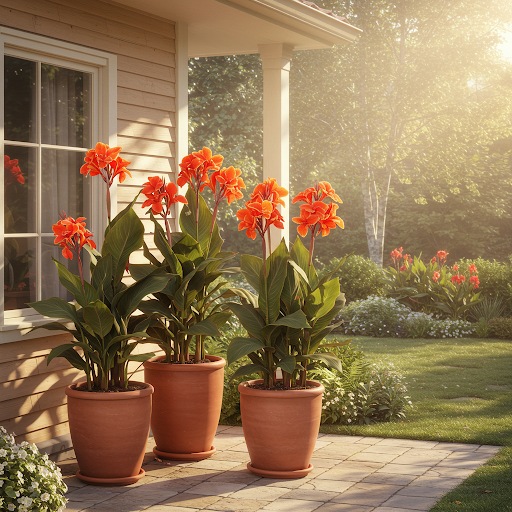
Canna Lilies
Authoritative Sources:
- Wikipedia – Canna (plant): https://en.wikipedia.org/wiki/Canna_(plant) (General information about the Canna genus)
- University of Florida Extension – Canna General Information: https://gardeningsolutions.ifas.ufl.edu/plants/ornamentals/cannas.shtml (University Extension Factsheet with horticultural advice)
In Summary:
Growing Canna Lilies in containers is a fantastic way to bring a touch of the tropics to your home and garden. With their bold foliage and vibrant blooms, they make a stunning statement in pots. By providing plenty of sun, water, and fertilizer, and choosing the right container, you can easily cultivate these impressive plants and enjoy their beauty throughout the summer season.
20YB
By greenship|2024-08-16T05:37:57+00:00August 16, 2024|Categories: Hand-carving Series|
KC2-11VH
By greenship|2024-08-16T06:19:28+00:00August 16, 2024|Categories: Hand-carving Series|
KC3-14A
By greenship|2024-08-16T06:26:30+00:00August 16, 2024|Categories: Hand-carving Series|
K2-11T
By greenship|2024-08-13T04:21:25+00:00August 13, 2024|Categories: Hand-carving Series|
Modern Plant Pots丨Planter for Indoor Plants,8 inch or 10 inch Plant Pots with Drainage Hole,Decorative Flower Pots
By greenship-seo|2025-04-10T08:32:55+00:00January 7, 2025|Categories: Hand-carving Series|Tags: Decorative Flower Pots, Self-Watering Pots|
KC3-09k
By greenship|2024-08-16T06:24:36+00:00August 16, 2024|Categories: Hand-carving Series|

